Хаас за 70 години Формула 1
Ромен Грожан:
The old phrase states ‘necessity is the mother of invention’ – do you feel that applies to team strategy with some bold calls at the Hungarian Grand Prix and again in Sunday’s British Grand Prix – where you ran deep on the medium tires to run as high as fifth?
Yes, I think we try as much as we can. Obviously, the last two strategy calls have been the right ones. It paid out in Hungary with Kevin (Magnussen) scoring a point. It didn’t really happen on Sunday, but we tried. We brought the car up to fifth, I was having a good race from there. It’s good and I think we need to keep doing that.
What are the key takeaways from the British Grand Prix that can be applied to this weekend’s 70th Anniversary Grand Prix at Silverstone?
I think it will again be another interesting race. The tire selection is a bit different, so everything we learned throughout the weekend and on Sunday is good. We can try to optimize everything. We have some ideas as to where we can get better, that’s what our focus will be on.
With Formula One announcing a return to the Nurburgring in October – where you scored a third place podium in the 2013 German Grand Prix, plus the addition of Portimao and Imola, do you relish the return to a circuit with some happy memories and what experience, if any, do you have of the other circuits?
I’m very happy with the addition of those tracks. Nurburgring is a great track and 2013 was a very good race. We had a bit of a different strategy and without the safety car I’d have won the race. I raced at Imola in the 2011 GP2 Asia Series, taking the pole and winning the feature race. It’s an incredible circuit with a lot of history obviously. I’ve only ever seen footage of Portimao, but it looks really good – let’s see what we can do in a Formula One car there.
From a driver’s perspective is it exciting to go to new circuits and have that element of the unknown ahead of a race weekend?
Yes – 100 percent. It makes a change from the routine we normally have. I am very happy with the calendar, I think it’s great fun. I think we’re going to have a good year going to these tracks.
How do you work with your engineers to prepare for those tracks, is it predominantly simulator work? What do you specifically focus on as a driver in this scenario?
Yes, I think the simulator is important. Also, getting all the information from the track, the scanning, the layout – everything to ensure we are ready for when we go there. It’s going to involve some work in advance, some simulator work, some onboards and so on, to really discover the track.
Кевин Магнусен: The British Grand Prix was somewhat of a rollercoaster weekend with extreme temperatures on Friday, a challenging qualifying session, grid promotion, a great start then the obvious disappointment of an early race retirement. How much time do you spend processing all that happened or is your mindset simply focused on the next race?
Well there’s not too much to process from the race obviously, but there was a lot to learn from the weekend in general from practice and qualifying. We’ll see what we can take into this weekend.
What are the key takeaways from the British Grand Prix that can be applied to this weekend’s 70th Anniversary Grand Prix at Silverstone?
On Friday it was very hot so if this weekend is as hot as it looks like, we might be able to take some of that learning from Friday and carry it on into this weekend.
With Mugello, Nurburgring, Portimao and Imola announced on the Formula One calendar – do you have any experience of those circuits and if so, in what categories?
I have experience at Nurburgring and Portimao. I’ve raced at the Nurburgring in almost every category I was in before Formula One except, I think, Renault 3.5. I did a Formula Three test in Portimao, so I’ve been there, but it was back around 2010 I think – certainly quite a while ago. I’ve never been to Mugello or Imola so there’ll be some learning to do, especially at Imola with just one practice session before qualifying. That’s going to be exciting.
From a driver’s perspective is it exciting to go to new circuits and have that element of the unknown ahead of a race weekend?
I always like to learn new tracks. It’s a disadvantage if you don’t know the tracks and other competitors do know them. For the circuits I don’t know I’ll just have to learn them really quickly.
How do you work with your engineers to prepare for those tracks, is it predominantly simulator work? What do you specifically focus on as a driver in this scenario?
As a driver you just try and prepare beforehand as much as you can before driving the track, whether that’s on the simulator or watching videos. You study the track and analyze it as best as you can with things like onboard footage and previous races before going there for real. There’s not too much else you can do. In terms of what we do with the engineering, it’s really focused on getting the set-up as best as we can to start with.
Гюнтер Щайнер: The old phrase states ‘necessity is the mother of invention’ – do you feel that applies to team strategy currently with some bold calls at the Hungarian Grand Prix and again in Sunday’s British Grand Prix?
We make these calls because if you have nothing, or at least little to lose, you need to do something different to make something happen. As a team we just decided to take a little bit more risk because these things can go backwards pretty quick as well, or against you, but once we made points and unfortunately on Sunday we didn’t. We could have put ourselves in a position to score points if not for the pitstop issue for Romain (Grosjean) in engaging first gear. If the opportunity arises to do something different – we will do it and we are doing it.
What are the key takeaways from the British Grand Prix that can be applied to this weekend’s 70th Anniversary Grand Prix at Silverstone?
What we learned last weekend is that the car is not too bad on race pace – Romain was competitive in the midfield. What we need to do is try to get better in qualifying, which at this moment in time is difficult. But that’s what we learned - in racing at Silverstone, we can play in the midfield. We just need to get the best out of qualifying so we can start in a position so we can make moves. If you start at the back it’s very difficult to move forward with the air being so dirty, it’s very difficult to advance.
What are the positive elements you see emerging within the team this season amongst the challenges faced both on and off-track?
The positive element is really that all the people on the team are highly motivated to keep on going. We are all happy to still be here and everybody’s fighting really hard to stay here. Even if we haven’t got the best package of car at the moment, we’re always fighting and giving our best. There’s a lot of effort involved, a lot of long hours, and if we keep this going, we’ll be in a better position pretty soon.
From an engineering standpoint, would you be happier racing at familiar circuits – with all the data and experience you have as a team, or do you see the recent introduction of the likes of Mugello, Nurburgring, Portimao and Imola to the 2020 F1 calendar as a positive opportunity – a blank canvas with everyone starting from scratch?
I see the new races as being exciting and challenges give you opportunities. I hope we can take some opportunities in those races where everybody almost starts with a blank canvas. Some of the big teams will be doing testing at these tracks with two or three-year-old cars to get some data from it, that’s not forbidden by the regulations, so we can’t do a lot about it. But still, even if you go there with an old car, it’s still a new race track for the driver. It should give you some advantage, because something unforeseen can come, and your preparation – the well-funded teams have much more resources, they can do a much more thorough job to prepare for a new event. That said, I find it quite exciting and I’m sure there will be opportunities, we just need to be able to take them.
What are the steps the team makes to prepare for those new circuits? Is the simulator the key element in those preparations?
The simulator is a key element. We’re looking right now if we’re going to do some sessions. We all know we have a tight budget and we need to spend our money wisely, but maybe this is one of these things we will be doing. This would be a good investment and a very important thing to do.


















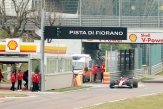
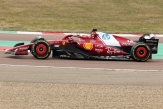
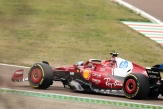
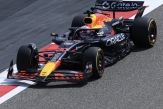
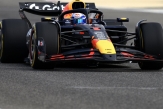
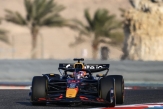

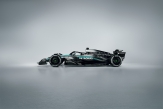
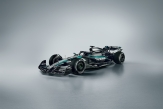



.jpg)
.jpg)
.jpg)

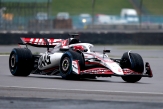

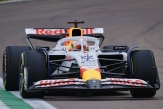
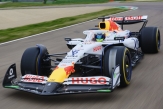



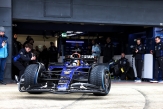
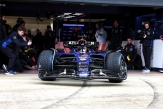
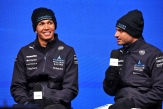

02/12/2025 от Огнян Тенчев (drJeckyll), няма коментари